I found out the Toledo Imagination Station is on the finalist list for the 2016 National Medal for Library and Museum Service. One of the other finalists is The Eric Carle Museum of Picture Book Art (I would love to visit this museum). Today is Very Hungry Caterpillar Day. What could be more appropriate for this day than a book …![]()
Viewing: Blog Posts Tagged with: surrealism, Most Recent at Top [Help]
Results 1 - 8 of 8
Blog: Kid Lit Reviews (Login to Add to MyJacketFlap)
JacketFlap tags: Children's Books, creativity, imagination, Picture Books, Eric Carle, nonsense, critical thinking, surrealism, Philomel Books, Penguin Young Readers Group, Library Donated Books, Very Hungry Caterpillar Day, 5-Stars, The Nonsense Show, Add a tag
Blog: OUPblog (Login to Add to MyJacketFlap)
JacketFlap tags: Poetry, Literature, surrealism, portraiture, Humanities, *Featured, Art & Architecture, Arts & Leisure, Bettina Shaw-Lawrence, David Gascoyne, Night Thoughts, Robert Fraser, gascoyne, Add a tag
By Robert Fraser
I am often asked to name my favourite poem by the British writer David Gascoyne (1916-2001), my biography of whom appears with OUP this month. Bearing in mind Gascoyne was in his time an interpreter of Surrealism, an existentialist of a religious variety and a proponent of ecology, you might expect me to go for a poem along these lines. Instead, I usually choose a poem of the early 1940s entitled “Odeur de Pensée.” The title is intriguing for a start, since it translates as either “The Smell of Thought” or”‘The Scent of a Pansy.” A pansy, you will properly reply, is almost odourless; its appearance suggests fragrance without it shedding much. If it possesses a scent at all, it is so elusive as almost to be undetectable. It is thus with thought:
Thought’s odour is so pale that in the air
Nostrils inhale, it disappears like fire
Put out by water. Drifting through the coils
Of the involved and sponge-like brain it frets
The fine-veined walls of secret mental cells,
Brushing their fragile fibre as with light
Nostalgic breezes…
Hard to locate in time or place, fitting uneasily into a biographical sequence, these lines nonetheless convey so much about a writer every stage of whose existence was marked by elusiveness. To me his life seemed a patchwork of lost years, lost works, lost people. There was, for example, the saga of his pre-war diaries, compiled in Paris and London between 1936 and 1940. Gascoyne had lent them to a theatrical colleague, who had forgotten to return them. For decades he assumed them to be lost then, one morning in the early 1970s, they re-appeared on his doorstep wrapped in brown paper, having surfaced among the effects of a recently deceased acquaintance. Unpacked and eventually published, they abounded in descriptions of contemporaries well — or else scarcely — known: W.H. Auden, Igor Stravinsky, André Breton, Henry Miller.
It was the obscurer names that preoccupied me. Bettina Shaw-Lawrence, for example — where was she? As a puppy-like teenager she had been a neighbour of the poet’s in the mid-nineteen thirties. She had a walk-on part in his Paris diaries, since she had gone on to study drawing with Fernand Léger and sculpture with Ossip Zadkine. I had seen a portrait of Bettina as a voluptuous twenty-something year old painted by David Kentish who, along with Lucian Freud and Johnny Craxton, formed the nucleus of the so-called East Anglian School of Painting and Drawing haphazardly run by Cedric Morris in the early war years. If she had known Kentish, there was a fair chance she knew the rest of that ramshackle bunch. Portraiture was very much part of the scene. In 1943 Freud sketched Gascoyne several times, his four wildly differing likenesses bearing witness to the poet’s changeable personality. Had Bettina drawn Gascoyne as well?
I contacted the Bridgeman Art Library who could tell me little, though they thought she might be in Italy. A circuitous trail of contacts led to her daughter, who told me she and her mother lived north of Rome in the picturesque lake-side town of Trevignano Romano. Bettina too had lost Gascoyne’s diaries, her printed copy had been borrowed and not returned. Could I acquire a replacement? I agreed on the condition we met. Thus I lured her to Richmond in Surrey where, one crowded bank holiday, we sat in a crowded pub where I endeavoured to hear her murmured reminiscences above the din of the drinkers. It was futile, so last autumn my wife Catherine and I followed her out to Italy, where she occupies a modest flat hun
Blog: Walking In Public (Login to Add to MyJacketFlap)
JacketFlap tags: sketches, painting, surrealism, art teachers, illustration week, new artist showcase, illustration, graphic novels, Add a tag
Website: http://mulveyart.com
Email: [email protected]
What makes you passionate about pursuing a career as an artist?
I think the main factor that motivates me is the same thing that drives most artists to do what they do. I’ve been doing this for such a long time, that I can’t picture myself thriving in any other field. You set yourself up for success in almost any skill that that you begin to practice at an early age. Ask any Olympic gold winner. They’ll probably tell you they’ve been training since the age of 4.
What kind of stories are you working on lately?
Right now I’m working on two stories simultaneously. They are both graphic novels. One of them takes place in a parallel universe, on a distant planet. It touches on many of the problems we have here on earth – war, economic disputes, pollution, etc. This comic won’t be done for many years, and I began conceptualizing it eight years ago.
The one I plan on finishing sooner is about drugs and substance abuse. Each character in the series is a drug, and they all interact inside the body of a 15 year old boy. I do not work any biased views into the plot, and make sure that each drug’s persona proves to be educational to the fullest extent of it’s nature.
None of my stories have ever involved humans. They’re boring and predictable.
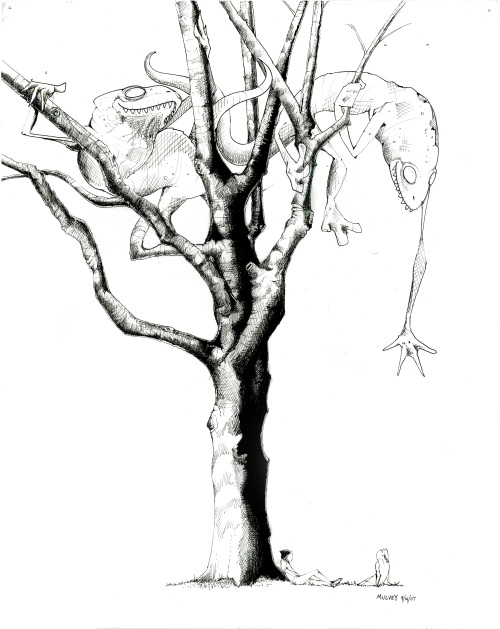 Where do you get your inspiration, in or outside of art? Favorite artists?
Where do you get your inspiration, in or outside of art? Favorite artists?
Ren and Stimpy, The Nightmare Before Christmas, Anything that involves the Muppets, Looney Tunes, Calvin and Hobbes, The Crow, The ”Bone” series, the Ninja Turtles, Dennis Hopper, Edward Munch, Salvador Dali, Magritte, Goya, and Hunter S. Thompson.
No matter who you are, your creations will always reflect what you were exposed to when you were younger. I feel like my generation was particularly lucky.
You’re an art teacher as well… does that inspire you creatively? What advice would you give to kids looking to pursue illustration as a career?
The kids I teach are mostly between 6 and 8 years old. every once in a while we’ll get a
Blog: Keith Mansfield (Login to Add to MyJacketFlap)
JacketFlap tags: Leonardo DiCaprio, Cinema, surrealism, Tom Hardy, Christopher Nolan, Ellen Page, Thinking aloud, Breton, Marion Cotillard, Memento, Roger Penrose, Total Recall, dreams, Film, Add a tag
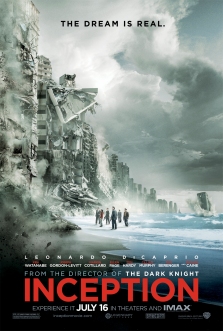 My earliest memories are dreams. In the very first I awake up on a beach in China, with snakes coming out of the sand. How could I not love the opening of Inception, Leonardo DiCaprio’s Cobb in the surf with a pagoda in the background?
My earliest memories are dreams. In the very first I awake up on a beach in China, with snakes coming out of the sand. How could I not love the opening of Inception, Leonardo DiCaprio’s Cobb in the surf with a pagoda in the background?
I’ve been blessed with cinematic, powerful dreams all my life. Sometimes I’ve lived a lifetime in one night – I didn’t know other people had experienced that but, in Christopher Nolan’s film, the characters grow old in the dream, only to wake up young again the next morning. Often, I’ve died in my dreams, so it was good to see that Nolan’s film didn’t promote the popular misconception that if you die in your dreams, you do in real life. In the movie, as in my dreams, it means you (normally) wake up.
Lucid dreaming is having the ability to be aware that you’re dreaming and remain in the dream to control it. The classic conundrum is to know what is the waking state, the “real” world, and what is the dream state. A corollary is to ask which is more important. Read Andre Breton’s Surrealist Manifesto and you may easily become convinced it’s the dream.
In the film the characters carry personal totems so they can tell if they’re dreaming or not. Cobb is never without a small spinning top that apparently only topples in the real world. In dreams it can spin forever. The technique I tend to use is to deliberately look at a scene or view, turn away, turn back and look at it again – if it’s changed it’s an indication I’m in a dream world rather than reality.
When you discover you’re dreaming, the secret is to remember this while staying in your dream. Do that, and you can do anything you want – literally. You become a god, in charge of everything and anything. My first step is normally to fly – there are few things more liberating than swooping across the sky feeling the wind on your face. Sometimes you change your form – if battling a gigantic monster of some description, I reckon I’ll be more successful if growing razor-sharp claws (and just growing).
A slight disappointment of Inception was the lack of “physics”. Near the beginning of the film, new architect Ariadne (played by Ellen Page) asks the question about changing the laws of nature and folds the world in on itself, but that seems to be where it ends. There’s just one later point where Tom Hardy’s Eames magics himself a bigger gun, but that’s all. On the whole, the rules of reality seem to permeate all levels of the dream worlds within the film. A nice touch though, was the inclusion of impossible objects, specifically a Penrose staircase that the characters referred to by name. I’ll be sure to mention it when Sir Roger’s next in my office.
The dream within the dream is a very common by-product for lucid dreamers. Many’s the time I’ve woken up, spent most of the day at work, only to wake up, realize
Add a CommentBlog: DRAWN! (Login to Add to MyJacketFlap)
JacketFlap tags: surrealism, pop surrealism, todd schorr, Illustration, Art, video, Add a tag
The San Jose Museum of Art has put together this fantastic video series to promote an upcoming show Todd Schorr: American Surreal.
In the videos, pop surrealist Todd Schorr delves into his cartoony influences, his painting technique, and the inspirations behind several of his pieces. Go ahead and skip to video 2, unless you can’t get enough of Raymond Scott’s Powerhouse and want to see a preview of what to expect in the full playlist.
I particularly enjoyed the story behind this painting, The Anguish of Carl Akeley:

Blog: Bookfinder.com Journal (Login to Add to MyJacketFlap)
JacketFlap tags: Bookish, surrealism, Codex Seraphinianus, false writing system, fictional language, Luigi Serafini, weird book, Add a tag
I could not resist posting this about The Codex Seraphinianus. For anyone who does not know it is a very strange book of art... or science fiction, its really tough to say. It appeared on the BookFinder.com report this past year as the 8th most searched for book in the science fiction, fantasy and horror category, and now you can see why it's so popular.
The book is an encyclopedia about an alien world, written in an alien [many say false] language. AbeBooks has written a comprehensive review of this fascinating book, with heaps of photos.
You can check out the whole feature here.
The Codex Seraphinianus is quite rare and expensive but there is a reprint edition published in Italy that is much more affordable.
Blog: Garden Painter Art (Login to Add to MyJacketFlap)
JacketFlap tags: collage, mixed media, watercolor, bunny, rabbit, Kimberly Wlassak, Garden Painter Art, blog contest, vintage photos, Anthropomorphic, give away, surrealism, contest, Add a tag
Hello There:
Just popping in to inform you that I am having a give-away starting tomorrow at 11:00 a.m. pacific standard time. It will run through Sunday evening until 5:00 p.m. pacific standard time. The contest winner will receive a print of my original collage entitled: "Rabbit's Curious Day". I will include a photo of the print in tomorrows blog entry. All you need to do is post a comment and the winner will be chosen randomly by none other than my very old dog Homer.
Stop by tomorrow if you'd like to be included in the contest.
Thanks so much:
Kim
Garden Painter Art
Blog: DRAWN! (Login to Add to MyJacketFlap)
JacketFlap tags: Russian, Boris Artzybasheff, surrealism, Books, Art, Add a tag
The long-out-of-print book of drawings by Russian surrealist Boris Artzybasheff, As I See, has finally made it back it to print thanks to Titan Books, and it’s one of the coolest books that’s made it into my collection this year. As I See is a real visual treat of surrealism–a look at human progress and technology that lies somewhere between where Jim Henson and Salvador Dali meet, or perhaps an unlikely collaboration between Dr. Seuss and H.R. Giger. It’s the perfect blend of cartoon silliness and unsettling social commentary.
See more of Artzybasheff’s work online at The American Art Archives.





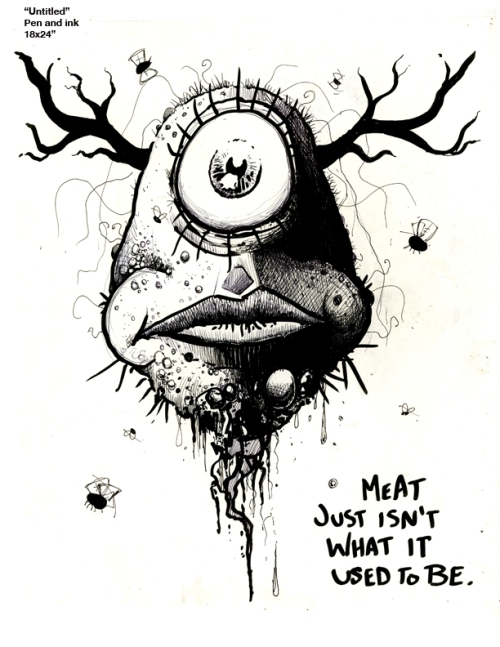
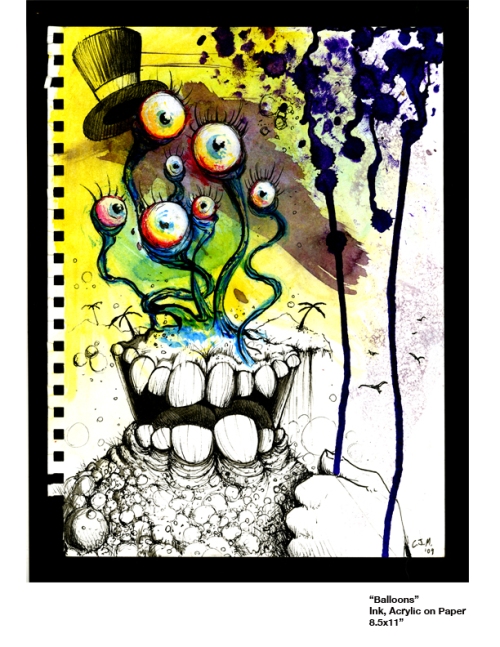

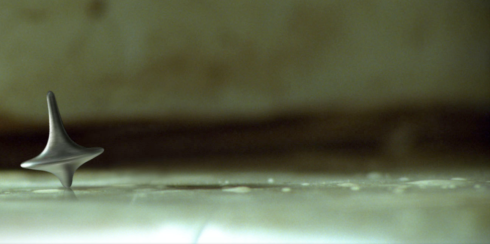
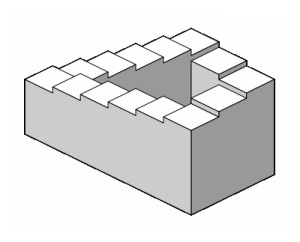

That’s good stuff. I didn’t know his paintings were so huge.